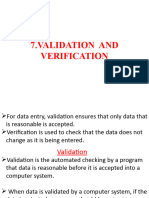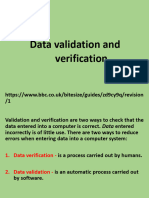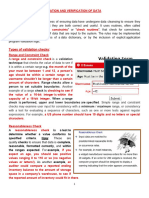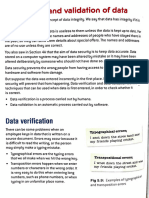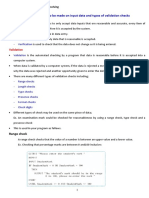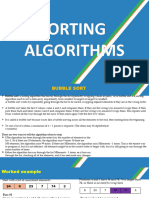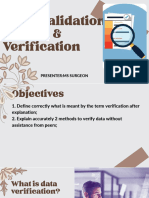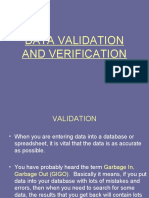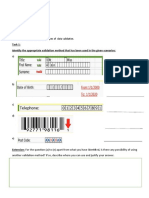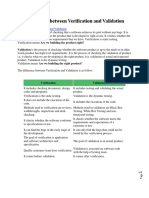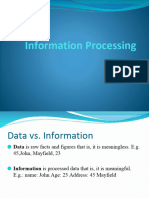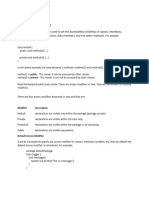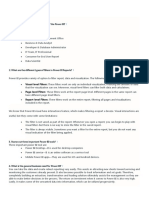0% found this document useful (0 votes)
214 views3 pagesData Validation for Developers
Validation is an automatic check to ensure entered data is sensible and feasible, but cannot guarantee accuracy. When programming, validations should be included to prevent unexpected data from crashing programs or producing invalid outputs. Common validation methods include range checks, type checks, length checks, presence checks, format checks, and character checks.
Uploaded by
Guru Raja DintakurthiCopyright
© © All Rights Reserved
We take content rights seriously. If you suspect this is your content, claim it here.
Available Formats
Download as PDF, TXT or read online on Scribd
0% found this document useful (0 votes)
214 views3 pagesData Validation for Developers
Validation is an automatic check to ensure entered data is sensible and feasible, but cannot guarantee accuracy. When programming, validations should be included to prevent unexpected data from crashing programs or producing invalid outputs. Common validation methods include range checks, type checks, length checks, presence checks, format checks, and character checks.
Uploaded by
Guru Raja DintakurthiCopyright
© © All Rights Reserved
We take content rights seriously. If you suspect this is your content, claim it here.
Available Formats
Download as PDF, TXT or read online on Scribd
/ 3






